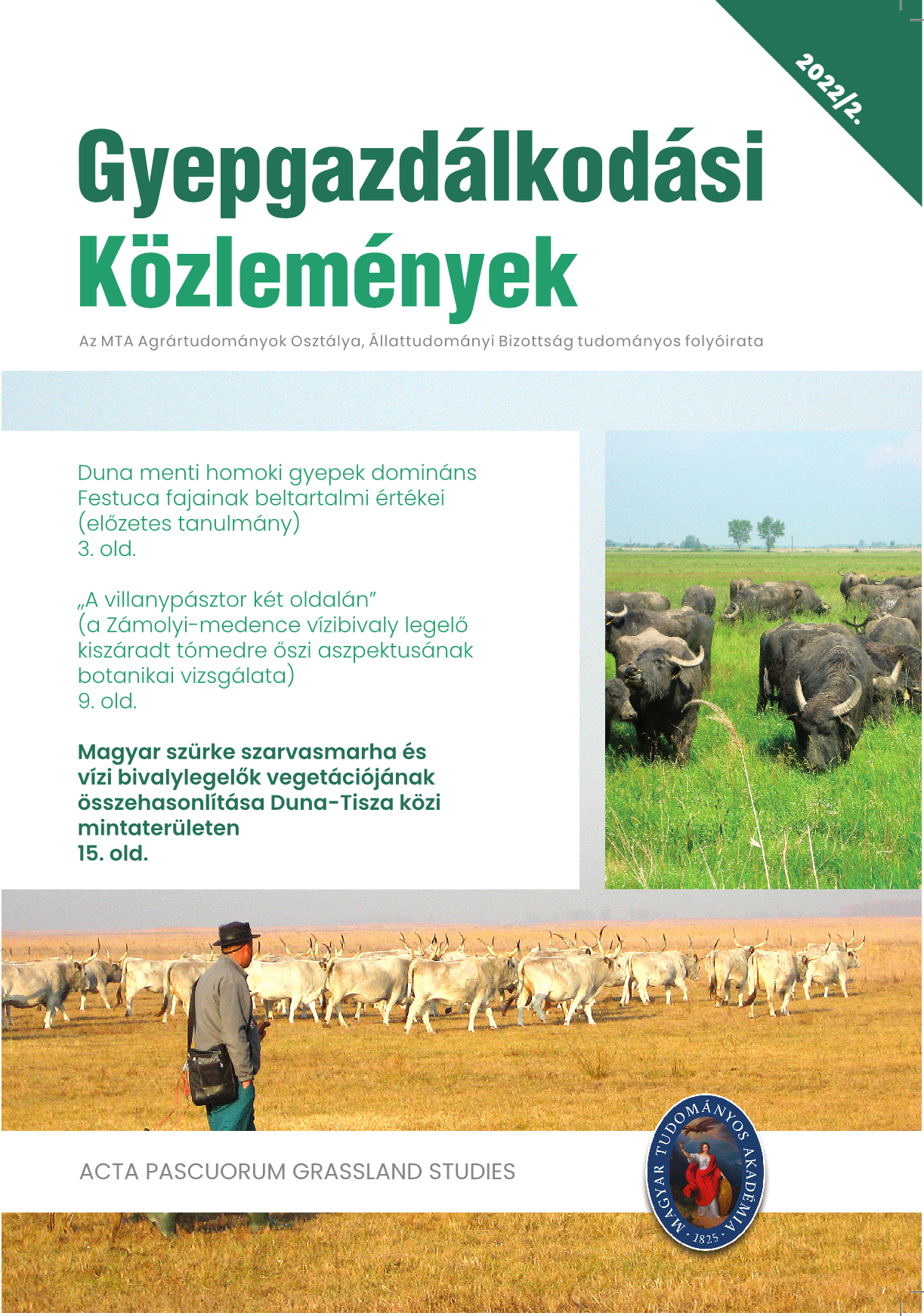Kondoros melletti mezsgyék, mint löszgyep töredékek
Szerző
Megtekintés
Kulcsszavak
Licenc

This work is licensed under a Creative Commons Attribution-NonCommercial-NoDerivatives 4.0 International License.
Hogyan hivatkozzuk
Absztrakt
Loess vegetations of the Carpathian Basin have been ploughed for a thousand years. Therefore, in Hungary, it is also important to find out the composition of loess vegetation. Therefore, loess steppes of verges of the Transdanubia have nearly disappeared.
The extent of the loess bedrock and its vegetation were significant in the Pannonian area, but nowadays (Zólyomi, 1936, 1958; Zólyomi et al., 1997), they have been left in only fragments, mainly because of intensive agricultural activities and expansion of agricultural areas (Rákóczi and Barczi, 2014; Barczi et al., 2004a, b; Penksza et al., 2011; Deák et al., 2016a; Valkó et al., 2018). Therefore, the patches are very important, extending mainly over the central plain of the Pannonian area, but also spreading up to the foothills (Bíró et al., 2018; Penksza et al., 1994, 1996). Thus, several researchers have investigated these remnant vegetation patches in the central Carpathian Basin, Szerényi and Kalapos (2000), Csontos and Tamás (2007), Csontos et al., (2022). However, most of the studies were made in the Great Hungarian Plain, where the role of the Cumanian mounds was also significant from among the remnants. These patches of loess remnants are considered as hot spots for vegetation (Deák et al., 2016b, 2022; Dembicz et al., 2018, 2020). In addition, verges alongsideagricultural areas and roads, where the vegetation has been reduced, are also very important as relics of the former vegetation (Csathó, 2008, 2011; Szentes et al., 2022; Bajor et al., 2016).

 https://doi.org/10.55725/gygk/2022/20/2/12259
https://doi.org/10.55725/gygk/2022/20/2/12259